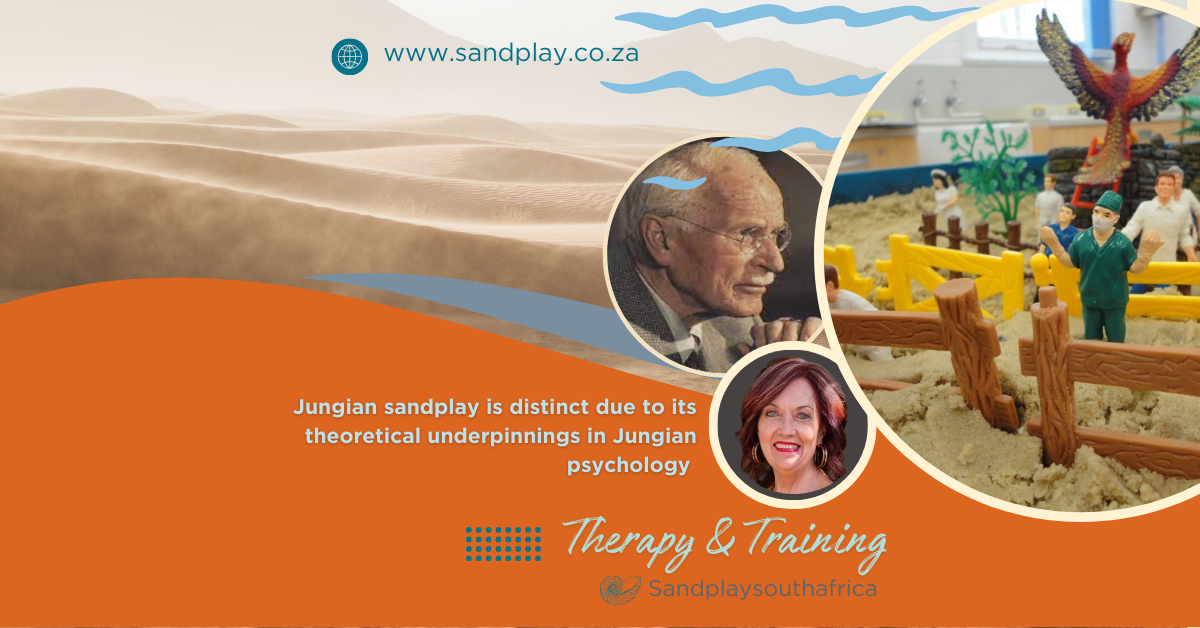Jungian sandplay therapy is a therapeutic technique that involves the use of a sandtray and miniature figures to create scenes and narratives. Developed by Dora Kalff in the mid-20th century, it draws heavily on Jungian psychology and aims to facilitate self-exploration and emotional healing.
Carl Gustav Jung (1875–1961) was a Swiss psychiatrist and psychoanalyst who founded analytical psychology. His work significantly influenced modern psychology, particularly in understanding the psyche, personality, and therapeutic practices.

“Until you make the unconcious concious, it will direct your life and you will call it fate.” Carl Jung
Why Jungian Sandplay and Not Just Sandplay:
- Jungian Framework: Unlike general sandplay, which may not adhere to a specific psychological theory, Jungian sandplay is rooted in Jungian analytical psychology. It emphasizes the role of archetypes, the collective unconscious, and symbolic representation in therapy. This framework helps in understanding the deeper layers of the client’s psyche and personal development.
- Focus on Symbols and Archetypes: Jungian sandplay places a strong emphasis on the interpretation of symbols and archetypes within the sandtray. This approach helps in uncovering universal themes and patterns in the client’s inner world, which can provide valuable insights into their personal struggles and growth.
- Integration with Jungian Theory: Jungian sandplay integrates techniques and concepts from Jungian theory, such as individuation, the shadow, and the self. This allows for a more structured and theoretically grounded approach to understanding and addressing psychological issues.
Other Types of Sandplay:
- Non-Jungian Sandplay: General sandplay therapy might focus more on the creative and expressive aspects without a specific theoretical framework. It can be used in various therapeutic contexts to help clients express themselves and explore their emotions through play.
- Kinetic Sandplay: A variation that uses kinetic sand, which has different tactile properties compared to regular sand. This can be particularly engaging for children or individuals who benefit from sensory experiences.
- Therapeutic Sandplay: This broader category includes different sandplay methods used in therapeutic settings, which may not necessarily follow the Jungian approach but still use sand and miniatures as a medium for exploration and healing.
In summary, Jungian sandplay is distinct due to its theoretical underpinnings in Jungian psychology, focusing on symbolic interpretation and the exploration of the unconscious. Other types of sandplay may vary in their techniques and theoretical foundations but share the common goal of using sand as a medium for personal expression and therapeutic work.



Comments are closed